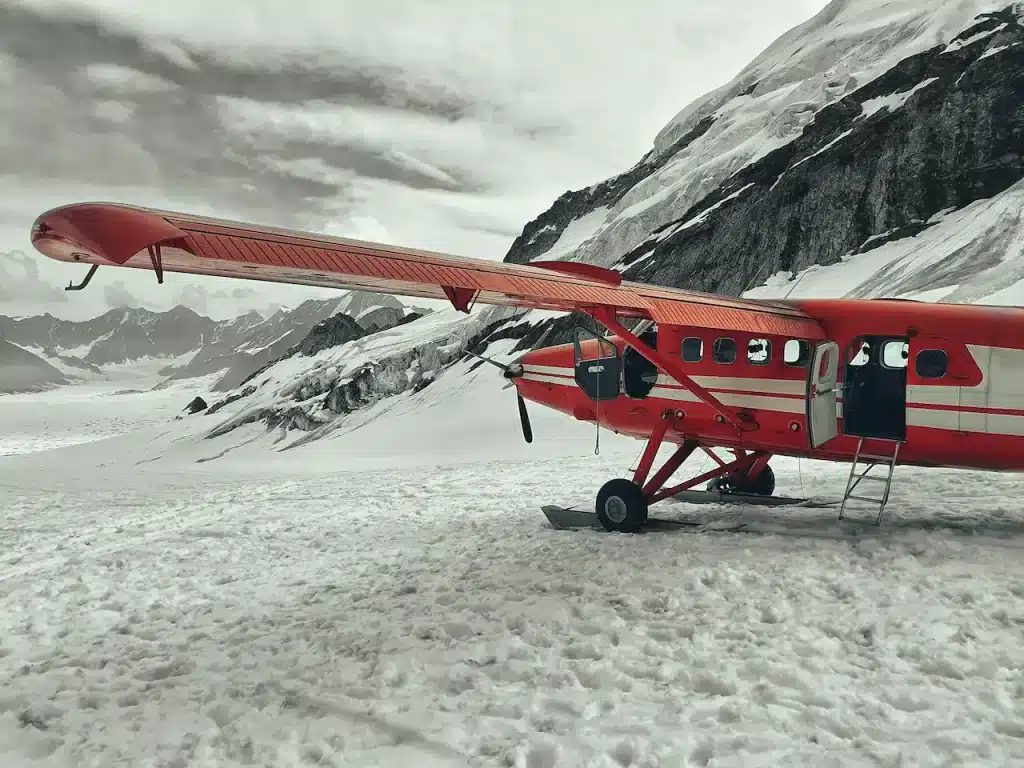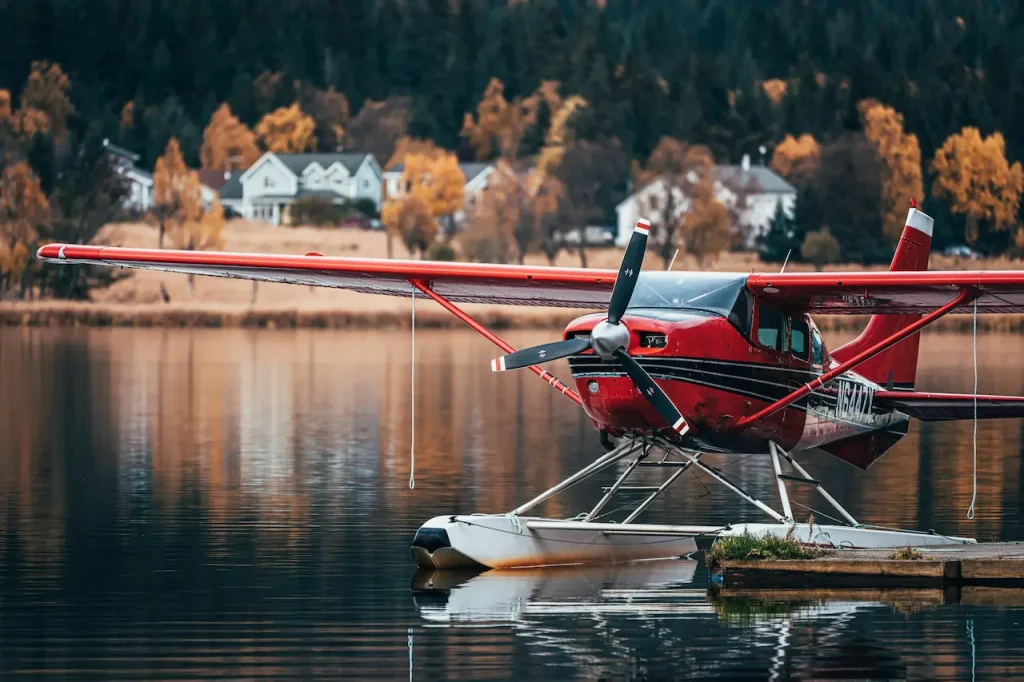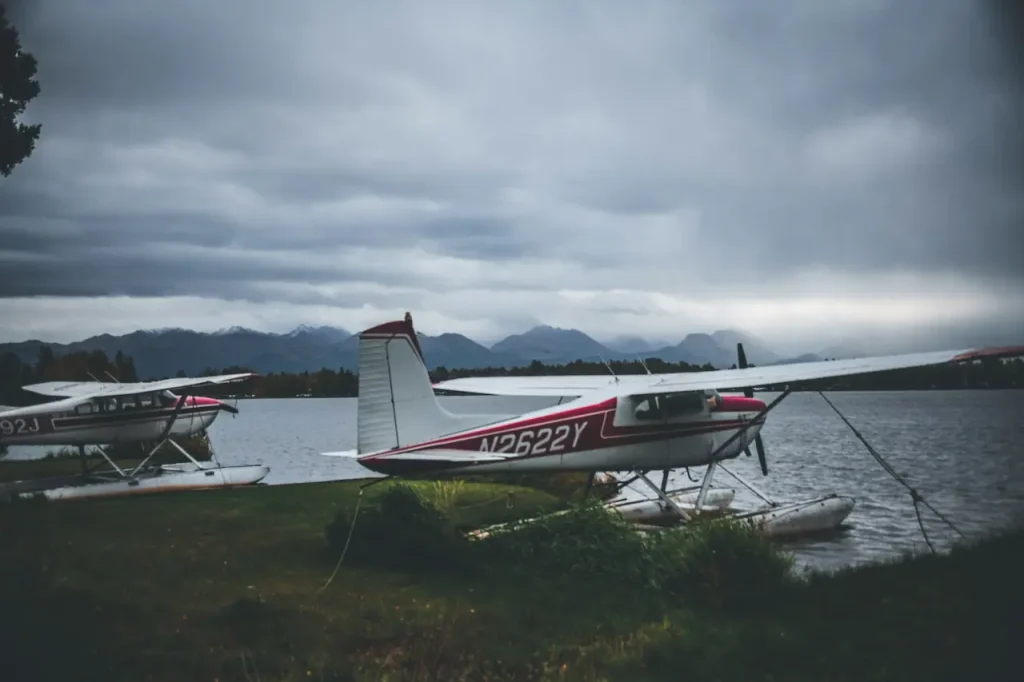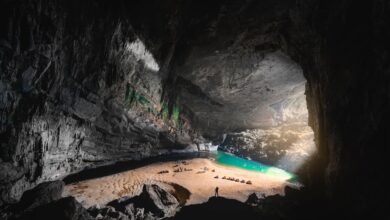Part One: The Skybound Lifeline
Alaska is a land of wild beauty, with sweeping glaciers, jagged mountains, pale sea-ice days, and midnight sunlight blazing on silent snowfields. This is a place unlike any other, where the grandeur of nature coexists with dangers that most people can’t fathom. In this vast area, road travel is a myth. There are no interlocking roads that span the mountains and no tracks for trains to traverse the tundra. Alaska’s arteries, however, are covered in contrails, and its lifeblood is pumped through the engines of small planes and helicopter rotors.
It is Alaska’s aeronautical lifeline. Every day, airmen are not only pilots but also connectors and community anchors.
Imagine the vastness of the landscape: cities scattered along the coast or in the interior; towns perched on peaks carved out by ancient ice. Villages that disappear from the map in winter and are only accessible when frozen rivers can support the weight of landing skis. Roads? Roads? People still live, work and dive into rivers. They hunt, raise their children, and celebrate the return of the sun after months of darkness. These winged warriors bring them mail, medicine and news, as well as supplies.

Here is a collection of pilots, a mosaic:
- There’s Finn. He is grizzled and steady. His face has been carved out by the wind and sun. He navigates as much by memory as by instrument. And his voice on the radio crackles like static dreams. He can name every mountain pass, rock outcrop and shifting snowbank.
- Mara is a young, fearless pilot who laughs loud enough to break through the thick silence of Alaska. She chases the storms with a purpose, sending vital supplies to remote clinics, when others hesitate, and spinning her plane in last-minute changes of runway, saving lives through sheer will. She was raised dog-mushing and knows the rhythm of the land in her bones.
- Javier is an immigrant, trained helicopter pilot, who brings cargo to both mining camps and tour groups. He hovers over crevasses that have been ripped by glaciers with the wind tangled up in rotors and the glaring noise of ice.
Alaska relies on these people, and they don’t fly for the sake of convenience or sport. They deliver fresh produce, emergency aid, mail and news to isolated communities with a population of 2,000 or less. In all kinds of weather, they arrive–when blizzards swirl and fog compresses the world down to inches. They fly into the unknown.
Part II – Peril and Perseverance
Alaskan aviation is fundamentally different. There are no long, smooth runways that are perfect for instrument landings. Instead:
- * airstrips are paved, snowmobile trails, gravel clearings in the tundra or river ice. Uneven, short and with only the sky to look forward to, one wrong move can lead to a mountain that crushes your wings or a river fed by glaciers.
- Weather is Alaska’s silent copilot. Fog creeps up without fanfare. The wind funnels down valleys and spits ice particles that freeze onto wings. Blizzards are a white fog that can reduce visibility to zero within minutes. Storms can form along the coast while the skies inland remain calm.
- Topography, unforgiving. Mountain peaks rise straight from the sea. Sharp ridges and crests are invisible under grey clouds. Pilots have described the valleys as channelling wind and clouds in a way that is “like whiskey down a straw”. Glacial lakes are transformed into slippery surfaces, riverbeds change, and today’s landing may not be tomorrow’s.
Alaska has a disproportionately high number of small plane accidents compared to its population. Why? Why?
But the wingmen continue to press on. Why?
For many communities, the delivery by plane is all. Consider a clinic along the Kuskokwim River. There is no road and no lumberyard nearby. The Anchorage-based pilot of the Med-Flight, who is a mother himself, flew 200 miles in erratic conditions when Mom broke her ankle. He relied on instinct and instruments as he did his instruments. The wheels hit the frozen river with a soft thud. A few moments later, the world turns around again. Her children are embraced, and her road to recovery is cushioned.

Imagine the mine camps that are hidden behind mountains, and where only heavy equipment can be delivered by airlift. Or the subsistence fishing outposts that are cut off from the rest of society in winter and survive by freezing and thawing. They wait every season for the day when the sky-carrier will appear.
Let’s go back to Mara. In February of last year, Bethel Clinic ran out of EPI-Pens and analgesics. Trucks could not cross, ice roads were too thin, and the river was a treacherous twist. She scrambled, her twin-engine plane stripped of weight and packs full of boxes. She took off at dawn, cutting through grey horizontals and aiming for a barely marked gravel strip. The runway was unlit, and the wind screamed. Forty minutes later, the goods were delivered. Lives are reassured. It’s her job.
Finn is tragic in many different ways. He recalls every crash. He remembers the pilot who pushed through the white-out to see the frozen lake hidden under the cloud. He recalls a friend who was lost under a ridge crevasse because radar valley illusions are capable of destroying trust. He wears it like armour, a father who is flying his daughter back home again.
Crash stories happen. Each one is etched into Alaskan lore. These tragedies lead to search-and-rescue operations, and pilot brothers answer the call. It can be as heartbreaking as a man’s death after diving into a cloud, or as tender as delivering supplies to survivors who are still alive weeks later.
Part III – Soul, Connection, & Why We Keep Flying
This story is more about connections than it is about geography, danger or flying skills. It’s about the human hearts that are tied together by engines and runways.
In the old mining town of Eureka, Nome or Coldfoot, pilots are much more than just delivery agents. They’re neighbours. They bring birthdays and school supplies. They also send photos of distant uncles. They send stories and pick up letters. They tour passengers through turquoise fjords singing glacier voice in the sunlight reflected by stardust. In winter, they carry fuel for stoves and spirits.
Here, aviation is a metaphor. The pilot is strapped to his seatbelt and hears the engine hum, just as the life hums – sounds of survival, of delivery.
Consider Javier again. He trained in the Philippines before coming to Alaska. He was expecting tropical skies, but instead he found frozen ones that were unforgiving and inscribed with human kindness. He has flown into Nome to drop off equipment for scientists studying polar bears and airlifted tourists above calving glaciers. He loves the solitude of the flight and the chorus from hungry tourists, “Look at that! Look at that!” His proudest moment was when a cold-clad nurse waved him away, holding oxygen supplies to the elderly.
Finn’s six-year-old daughter draws planes in her colouring book and asks, “Daddy, can you take me flying with you?” Will we ever touch the mountains? He smiles and says: “Maybe someday, but right now, we just watch, wait and live.”
They are the glue that holds Alaska together. They are the ones who send to others and receive from others. They are also those who brave storms to connect communities. These pilots are just as important as the spring melt and salmon runs.
The stories they create are like…
- Local kids place wooden stakes on the runway edge to help pilots see through drifting snow.
- Prescience allows for a rush-flight: When an expectant woman in a remote village starts to give birth early, a plane pilot cuts through the snow clouds and lands on a frozen lake to carry the mother to Fairbanks’ hospital. A baby is born interstate. The life of the child begins with the first heartbeat.
- Tourists board small planes to tour glaciers in the summer. They see the ice spires calving from above. But for the pilots, each flight is an homage to their stamina and nature’s strength.
Alaska’s bloodstreams are warm, beating and guiding.

Final Thoughts
The three parts of this series – Alaska Wingmen – will unfold in the following order:
- Part 1: The Skybound Lifeline – We will paint the geography and the dependence on flight. And we’ll show you the communities below. We will introduce pilots such as Mara and Finn, who embody Alaska’s spirit.
- Part 2: Peril and Perseverance – We will explore the challenges, including the wild weather, sharp terrain, makeshift airports, the magnitude of accidents, and the courage to continue flying.
- Part 3: Soul, Connection, Why We Keep Flying – We will explore the motivations of these pilots, their human connections, and the stories that they weave in Alaska’s icy landscape.
These posts will help readers understand Alaska’s dependence on aviation. They’ll also feel it. The reader will feel the turbulence and the cold. They’ll also experience the rush of each takeoff. The characters they meet are shaped by service and solitude. The pilots will show how geography dictates flight and how they respond, time and again.




